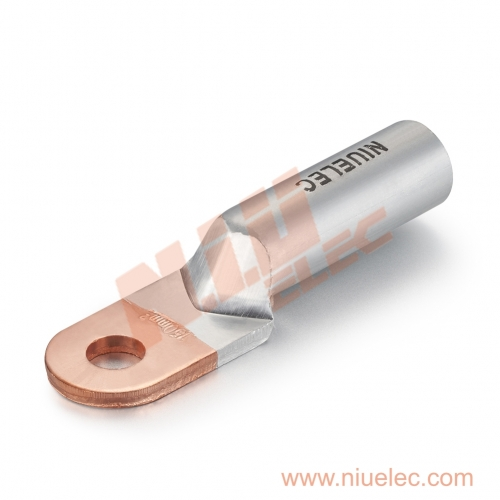Indoor playgrounds bring joy to children while providing a vital space for physical activity and social growth. However, with growing environmental awareness, operators, parents, indoor playground equipment suppliers, and equipment manufacturers are paying closer attention to the impact of these spaces. Beyond the fun, there’s a rising demand for sustainable practices, and surprisingly, the surfaces children play on are leading the way. The shift to easy-to-clean materials in indoor playground equipment isn’t just about hygiene—it’s about conserving water, reducing chemical use, and boosting efficiency, benefiting businesses, kids, and the planet. Sustainability is no longer a niche concern but a mainstream expectation. For family entertainment centers, shopping malls, childcare facilities, and indoor playground equipment suppliers, showing environmental responsibility can set them apart. Thoughtful material choices, particularly for soft play equipment, are key to building a cleaner, greener future for the next generation.
Table of contents:
The Unseen Hero: Eco-Advantages of Advanced Surface Materials
Splash Less, Save More: The Water Conservation Power of Easy-Clean Surfaces
Greener Cleans: Slashing Chemical Use for a Safer Planet and Play Space
The Efficiency Dividend: Saving Time, Resources, and Operational Headaches
Building a Greener Future: Compatibility with Sustainable Certifications
The Unseen Hero: Eco-Advantages of Advanced Surface Materials
The foundation of an eco-friendly, low-maintenance indoor playground lies in the materials used. Modern surfaces are now designed for durability, safety, and easy cleaning, offering clear environmental benefits.
Key materials like high-quality Polyurethane (PU) leather and expanded polyethylene (EPE) pearl cotton lead this evolution. PU leather, often used for soft play coverings, has a smooth, non-porous surface that prevents liquids like juice or cleaning solutions from seeping in. Unlike porous fabrics or less durable plastics, it resists absorption, stopping messes before they cause damage.
EPE pearl cotton, used as a cushioning core, is water-resistant and prevents mold or mildew growth, unlike traditional foams that trap moisture and become breeding grounds for bacteria and odors.
The environmental advantages of these materials are clear:
- Reduced Resource Use:Durable and wear-resistant, these materials last longer, reducing the need for replacements and cutting waste, energy use, and raw material consumption.
- No Harmful VOCs:High-quality PU leather and EPE foam are VOC-free, avoiding indoor air pollution and health risks, especially for young children with developing respiratory systems.
- Hypoallergenic and Safe:These materials don’t harbor allergens like dust mites and are safe for children with sensitivities, ensuring a cleaner, safer play environment.
By choosing durable, non-toxic, and eco-friendly materials, businesses invest in sustainability while creating healthier, long-lasting playgrounds.

Splash Less, Save More: The Water Conservation Power of Easy-Clean Surfaces
Water is a precious resource, and its conservation is a global imperative. Traditional cleaning methods for older or less thoughtfully designed play equipment often involve copious amounts of water – hosing down structures, soaking components, and extensive rinsing. This is not only wasteful but can also lead to prolonged drying times, impacting operational hours.
Easy-to-clean surfaces fundamentally change this dynamic:
- Minimal Water for Daily Maintenance:For most everyday spills and soiling on PU leather or similar non-porous materials, a simple wipe-down with a damp cloth is sufficient. There's no need for saturation or high-pressure washing. This drastically reduces daily water consumption.
- Eliminating the "Wash and Dry" Cycle:The "deep clean" process for conventional play equipment often involves a full wash-down followed by an energy-intensive drying period, sometimes requiring specialized blowers or simply taking the equipment out of commission for hours. With water-resistant, quick-drying materials, this entire cycle is often unnecessary or significantly curtailed. If a more thorough clean is needed, it still uses far less water and dries much faster.
- Ideal for High-Frequency Operations:For commercial venues like shopping malls, airports, or busy family entertainment centers, the ability to quickly clean and sanitize play equipment with minimal water is a huge operational advantage. Less downtime means more playtime and better customer satisfaction, all while upholding environmental responsibility.
The collective impact of these water-saving practices, when adopted across numerous indoor play facilities, can contribute significantly to regional water conservation efforts. It’s a practical demonstration of how smart design can lead to tangible environmental benefits.
Greener Cleans: Slashing Chemical Use for a Safer Planet and Play Space
The reliance on harsh chemical cleaning agents is another significant environmental and health concern associated with maintaining public spaces. Strong alkaline or acidic cleaners, disinfectants with aggressive active ingredients, and perfumed solutions can contribute to chemical pollution in wastewater, degrade materials over time, and leave residues that children can come into contact with.
Easy-clean surfaces help mitigate these risks substantially:
- Reduced Need for Aggressive Cleaners:Because dirt and grime sit on the surface rather than penetrating it, they can typically be removed with mild, eco-friendly soap and water, or even just water alone. There's rarely a need to resort to harsh chemical solvents or abrasive cleaners that can damage the material and the environment.
- Minimizing Children's Exposure to Chemical Residues:This is a paramount concern. Young children explore their world through touch and often put their hands in their mouths. Reducing the use of strong chemicals for cleaning directly translates to a lower risk of children ingesting or absorbing these potentially harmful substances.
- Supporting "Low-Toxicity Environments":The concept of creating low-toxicity or chemical-free spaces is gaining traction globally, especially in environments frequented by children, such as childcare centers and schools. Indoor playgrounds that can be maintained with minimal and mild cleaning agents align perfectly with this ethos, contributing to better indoor air quality and overall health. This often meets or exceeds the stringent standards set by international early childhood care and education bodies.
Choosing equipment that naturally lends itself to gentler cleaning protocols is a proactive step towards safeguarding both children's health and the broader environment from unnecessary chemical exposure.
The Efficiency Dividend: Saving Time, Resources, and Operational Headaches
Beyond the direct environmental benefits, easy-to-clean materials offer significant operational advantages that contribute to a more sustainable business model. Efficiency in maintenance translates to savings in labor, resources, and ultimately, operational costs.
- Faster Cleaning Cycles, Reduced Labor Costs:Time is money, especially in commercial settings. Surfaces that can be wiped clean in minutes rather than requiring lengthy scrubbing or specialized cleaning procedures dramatically reduce the staff hours dedicated to maintenance. For high-traffic venues like shopping centers or large family entertainment complexes, this cumulative time saving can be substantial.
- Extended Lifespan, Fewer Replacements:The durability of materials like PU leather and EPE foam, coupled with their resistance to moisture and mold, means they generally last longer. Fewer replacements mean less frequent capital expenditure on new equipment and reduced waste going to landfills. This longer maintenance cycle contributes to the overall sustainability of the operation.
- Enhanced "Save Money, Save Worry" Proposition for Clients:For businesses investing in an indoor playground, the total cost of ownership extends beyond the initial purchase price. Equipment that is easy and inexpensive to maintain, less prone to damage, and boasts a longer lifespan offers a better return on investment. It’s not just an eco-friendly choice; it’s a financially prudent one, allowing operators to focus on their core business rather than constant upkeep issues.
A commercial indoor playground equipment manufacturer that prioritizes these easy-care, durable materials is effectively offering its clients a more sustainable and economically sound solution.

Building a Greener Future: Compatibility with Sustainable Certifications
In the realm of construction and development, green building certifications like LEED (Leadership in Energy and Environmental Design) and WELL Building Standard are increasingly influential. These programs recognize and reward projects that prioritize environmental sustainability, occupant health, and resource efficiency.
Indoor play equipment made from easy-to-clean, non-toxic, and durable materials can contribute positively to achieving these certifications:
- Supporting LEED Credits:Components like low-VOC materials contribute to Indoor Environmental Quality credits. Durability and reduced replacement needs can align with Materials and Resources criteria by minimizing waste. The water-saving aspect of easy cleaning also resonates with Water Efficiency goals.
- Meeting Green Procurement Standards:For public institutions, schools, and progressive corporations in regions like Europe and North America, there are often green procurement policies in place. An indoor playground equipment supplier offering products that meet these criteria (e.g., low toxicity, sustainably sourced components where applicable, designed for longevity) becomes a preferred partner.
- Enhancing WELL Building Standard Compliance:The WELL standard focuses heavily on human health and well-being within the built environment. Features like low-VOC materials, surfaces that don't support microbial growth, and reduced chemical cleaning needs directly support WELL concepts like Air, Materials, and Nourishment (by ensuring safe surfaces around food areas if applicable).
By choosing play equipment that aligns with these green building principles, developers and facility managers can enhance the overall sustainability profile of their projects, making their properties more attractive to environmentally conscious tenants and users.
The journey towards a more sustainable future requires conscious choices at every level. For the indoor play industry, this means looking beyond the immediate appeal of bright colors and exciting designs to consider the lifecycle impact of the equipment. The adoption of easy-to-clean, durable, and non-toxic materials is a testament to this evolving mindset. It demonstrates that fun and environmental responsibility can, and indeed must, go hand-in-hand.Companies like TONGSHUO, a dedicated commercial indoor playground equipment manufacturer and indoor playground equipment supplier, are increasingly recognizing this imperative. By prioritizing materials such as high-grade PU leather and EPE pearl cotton in their soft play designs, they offer solutions that are not only engaging and safe for children but also significantly easier and more eco-friendly to maintain. This commitment helps their clients save water, reduce reliance on harsh chemicals, lower operational costs, and contribute to a healthier planet, proving that smart material choices are fundamental to the future of play.




















